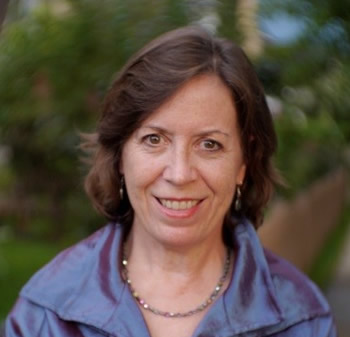From the Editor:
Eleanor Jane Hamilton (1909-2008) spent her career as an educator and a psychologist in New York and California. She married Albert Edward Hamilton in 1932 who nicknamed her “Ranger”, a name from a fairytale. Her work as a sex therapist (she still worked with people while in her 90s!) was noted as influential in the USA’s revolution in morals and manners during much of the past century. She helped young women get contraception in the 1940s, participated in the Kinsey report on American’s sex lives, wrote a sex and love column for Modern Bride Magazine in the 1960s and published several books. Partner’s in Love and Sex Before Marriage (1980) earned her appearances on nearly every talk show from Phil Donohue to Merv Griffin to Johnny Carson’s The Tonight Show.
SPT Magazine received this memoir, written by Eleanor, about her experience with Wilhelm Reich, from their first meeting to the end of their connection. She notes that while her relationship with Wilhelm was not as intimate as his wife, Ilse, or his son, Peter, she did know him in a special way—as a patient, a student and a close colleague and friend.
While we typically publish first person “articles” related to psychotherapy—research, clinical practices, and other cutting-edge material (be it resources or emerging methodologies)—we felt honored to share this personal insight into a man considered one of, if not the, founding father of body psychotherapy. Some of the material is well known (Reich’s work with orgone and his eventual decline), yet we opted to share the entire story as written (well, we did edit the text) as Eleanor also shares her story and experience as a cutting-edge innovator—the trials and tribulations she endured.
Eleanor Begins:
Whether psychology’s debt to Dr. Wilhelm Reich is acknowledged or not, many of our present day systems of psychotherapy rest squarely on his shoulders. Though now dead, he remains impressively alive. And in the context of what a fearful society can do to its greatest innovators, I believe his story, and in effect my story of our relationship, needs to be told far and wide.
Before Reich, most psychotherapists had swallowed—hook, line and sinker— either the pessimism of Freudians, or the mysticism of the Jungians, or the mechanistic machinations of the John B. Watsons, or the power theories of the Adlerians. Bio-energetic analysis, Gestalt techniques and other active therapies had not yet arrived, nor did they arrive until Reich’s mind blowing discoveries were well established.
Before Reich, depth psychotherapy was a long drawn out and often unsuccessful affair in which the revelation of causes and the exorcism of long held feelings were supposed to lead ultimate to a cure.
Before Reich, psychotherapists hardly dared look at their patients’ bodies, let alone touch them. Physical contact was taboo and the concept of muscular armoring was unknown and certainly not dealt with.
A number of books about Reich have been written by those who knew him far better than I—by his wife Ilse, who lived lovingly with him through stormy years; by his son, Peter, whom Reich adored, by his devoted student Micky Sharaf, who still revered him even after Reich took to bed Micky’s wife.
While not as intimate with him as these people, I did know him in a special way—first as a patient, then as a student, and later as the person who sheltered his wife and son when they fled his violence born of frustration and torment. I honored him and in his way, he honored me.
“We are both generals, Ranger,” he often said, with a big grin. This was the highest compliment he could have given me—this man who scourged what he called the “little men” (the moral majority) and those who refused their own birthright and allowed themselves to become contaminated by what he called “the emotional plague.”
Reich first came into my life just before our third child, Wendy, was born. My husband, Tajar, and I had been operating a nursery school in New York City at the time, and one day an irate mother of one of our pupils burst into the office demanding we fire her son’s teacher because she was a student of Dr. Wilhelm Reich. Until that moment we had never heard of him, though we both considered ourselves psychologists.
“And why is it so terrible to be a student of Dr. Reich’s?” Tajar asked.
“He believes that sex is good in or out of marriage. He even believes that children are sexual from birth and therefore should be allowed to enjoy it in their own ways. Have you ever heard of anything so perverse? Your teacher must be off her rocker to allow herself to be influenced by such a man, and I don’t want my child influenced by him.”
“It is your perfect right to withdraw your child from our school,” Tajar calmly answered her. “But Elizabeth is one of our best teachers. She is deeply loved by the children and admired by their parents. We would have to have a more damning accusation against a teacher than that she studies with a certain psychiatrist to make us even consider asking for her resignation.”
Remove her child this mother did, for she was not to be dissuaded of her own righteousness and was incense when this was challenged. In a conference with the teacher later that day we asked, “Who is this remarkable man called Wilhelm Reich who can arouse such ire in a seemingly otherwise reasonable mother?”
Without apology our teacher acknowledged that Reich’s theories were indeed considered revolutionary, but to her they made excellent sense. She loaded us her copies of Character Analysis and The Function of the Orgasm. We were never the same again.
At age 58, Tajar lost no time in presenting himself to Reich as a prospective pupil. Later he became one of Reich’s close friends. I had to wait until I had given birth to Wendy and was well into the nursing period before I, too, had the privilege of becoming a patient, and later a pupil. It was a mind boggling experience.



